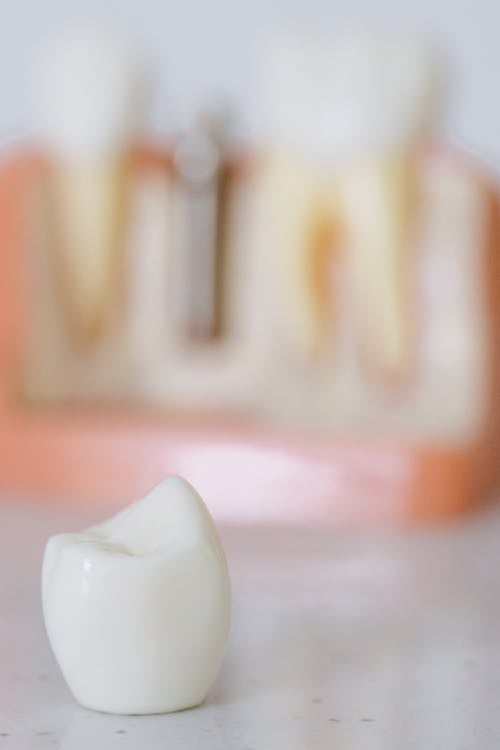Cheapest Dental Implant Johnstown OH Dental Implants in Columbus OH Services
The role of bone grafting in dental implant procedures is pivotal for achieving successful outcomes in restorative dentistry. Bone grafting is commonly essential when a affected person has inadequate bone density or quantity to support dental implants. This process not only lays the groundwork for the steadiness and longevity of implants but in addition aids in preserving the natural contours of the jaw, which can be compromised due to tooth loss.
When a tooth is misplaced, the surrounding bone begins to atrophy. This loss can create important challenges when considering implants. Bone grafting serves as a solution to this problem by augmenting the bone, allowing for safe placement of dental implants. Various types of grafting materials can be found, including autografts, allografts, xenografts, and artificial materials, each with its distinctive benefits.
Autografts, derived from the affected person's body, are often thought of the gold standard due to their biocompatibility and lowered risk of rejection. These grafts promote sooner therapeutic because the body acknowledges its own tissues. However, harvesting autografts includes additional surgical procedures, which may lengthen recovery occasions. This complex nature leads dental professionals to evaluate one of the best choices for every particular person case.
Allografts, obtained from human donors, offer a viable alternative to autografts. They have been processed to take away cells and reduce the risk of disease transmission. While they do not promote bone regrowth as effectively as autografts, allografts are broadly used and may mitigate the overall number of surgical sites wanted for a affected person's remedy. The convenience of allografts makes them interesting to both patients and practitioners.
Advanced Dental Implant Center Johnstown OH Trustworthy Tooth Implants Johnstown OH
Xenografts come from animal sources, usually bovine. They are additionally processed to get rid of disease pathogens. These materials can present a scaffold for brand new bone growth and are often favored in patients who could favor to reduce extra surgical procedures. Xenografts can stimulate the healing course of and have proven favorable integration with human bone.
Synthetic materials characterize one other revolutionary option for bone grafting. These materials, crafted from biocompatible substances, can mimic natural bone properties. They are designed to progressively degrade because the physique regenerates bone. This approach has been particularly helpful for sufferers preferring not to use organic materials or have considerations about rejection.
Dental And Implant Johnstown OH Dental Implants in Columbus OH Services
The timing of bone grafting in relation to dental implant placement can differ based mostly on the scientific state of affairs. In some cases, instant implant placement happens post-extraction alongside grafting to fill the void left by the eliminated tooth. This approach can improve the healing process and scale back total therapy time. However, for patients with extensive bone loss, staged procedures may be necessary, allowing for the graft to combine before inserting the implant.
During the grafting process, the bone materials is rigorously positioned in the designated area to help future implants. This includes meticulous planning, often utilizing imaging methods similar to cone beam computed tomography to evaluate bone health and density. Precise placements ensure that the graft supplies enough help and facilitates natural bone regeneration.
After the grafting process, a healing interval is crucial for model spanking new bone formation. This period can differ considerably among individuals, influenced by components corresponding to age, health status, and life-style decisions like smoking. Patients are sometimes monitored by way of follow-up appointments to ensure proper integration of the graft and assess preparation for the next implantation.
Once the graft has efficiently integrated with the prevailing bone, dental implants could be positioned, providing a steady foundation for crowns, bridges, or dentures. The success of this second stage closely relies on the standard and quantity of bone out there, reinforcing the significance of bone grafting in the total implant process. Proper integration helps mitigate risks of implant failure and helps the longevity of dental restorations.
Dental Implant Centers Johnstown OH General Restorative Dentistry Johnstown, OH
Complications can come up during bone grafting and implant procedures. Possible issues embody infection, graft rejection, and inadequate bone development. To minimize these risks, dentists make use of rigorous preoperative assessments and personalised therapy plans. Post-operative care is equally essential, with sufferers advised on correct oral hygiene and follow-up care to promote healing and monitor implants.
The influence of successful dental implant procedures on patients’ lives is profound. Improved oral perform, higher aesthetics, and enhanced confidence are common advantages reported by individuals who have undergone these procedures. Bone grafting performs a big position in making these positive outcomes achievable.
As technology advances, the strategies and materials available for bone grafting proceed to evolve. Innovations like biological progress components and stem cell applications maintain promise for additional enhancing the efficacy of grafting procedures. Continued research on this subject will likely yield new strategies that improve the mixing and success rates of dental implants.
Cheap Dental Implant Near Me Johnstown OH Aesthetically Pleasing Dental Implants Johnstown OH
In conclusion, the significance of bone grafting in dental implant procedures can't be overstated. As a crucial step in ensuring the soundness and performance of implants, grafting directly influences the general success of restorative dentistry. By addressing the challenges of bone loss and facilitating new bone formation, grafting opens the door to options for many patients seeking to revive their smiles.
The interaction between technological advancements and biological science guarantees thrilling developments in this subject, making certain that dental professionals can supply the most effective remedies to improve quality of life for his or her sufferers.

- Bone grafting provides the mandatory bone quantity and density for profitable dental implant placement, particularly in areas with inadequate bone structure.
- It helps to regenerate misplaced bone as a result of periodontal disease, trauma, or tooth loss, ensuring a steady basis for implants.
- Different kinds of graft materials, similar to autografts, allografts, and synthetic choices, supply numerous advantages by means of healing time and biocompatibility.
- Bone grafting can enhance the aesthetic outcomes of implants by permitting for better contouring and shaping of the gum tissue across the implant.
- A well-conducted bone graft can significantly enhance the long-term success charges of dental implants, reducing the risk of implant failure.
- The procedure can typically be carried out concurrently with implant placement, making it a time-efficient possibility for patients.
- Personalized treatment plans involving bone grafting take into account individual anatomical concerns, leading to better results.
- Advances in technology, similar to guided bone regeneration and membrane techniques, have improved the effectiveness of bone grafting procedures.
- Post-operative care and monitoring after bone grafting are essential for reaching desired outcomes and stopping issues.
- Successful bone grafting leads to improved general oral health, encouraging correct chewing and performance, which can influence nutrition positively.undefinedWhat is bone grafting, and why is it wanted in dental implant procedures?
Bone grafting is a surgical process that includes transplanting bone tissue to create a stable basis for dental implants. It is necessary when there is insufficient bone quantity or density in the jaw, usually due to tooth loss, trauma, or periodontal disease. By augmenting the bone structure, grafting enhances the probabilities of a profitable implant placement.
Dental Implant Restoration Johnstown OH Implant Restoration Experts for Lasting Smiles
How does bone grafting enhance dental implant success rates?
Bone grafting enhances dental implant success charges by providing sufficient bone assist for the implant. A well-integrated graft ensures that the implant can face up to the forces of chewing, reducing the danger of implant failure and complications over time. Sufficient bone volume improves stability and promotes higher healing.
What types of bone grafts are utilized in dental procedures?
There are several forms of bone grafts used in dentistry, together with autografts (bone taken from the patient), allografts (donor bone), xenografts (animal-derived bone), and alloplastic materials (synthetic options). The selection of graft is decided by the particular state of affairs, affected person health, and desired outcomes.
Dental And Implant Johnstown OH Dental Implants Columbus and Reynoldsburg OH

How long does bone grafting take before dental implants could be placed?
Typically, the bone grafting course of requires a therapeutic interval of three to six months before dental implants may be positioned. This length permits the graft to integrate with the existing bone tissue, fostering a strong basis for the implant. However, healing times can vary depending on individual cases and the sort of graft used.
Is bone grafting a painful procedure?
Dental And Implant Center Johnstown OH Dental Implants in Columbus OH Services
Patients could experience some discomfort during and after the bone grafting procedure, much like different dental surgical procedures. Local anesthesia is used to reduce pain, and post-operative pain can normally be managed with prescribed medicine. Most patients discover the discomfort manageable and temporary.
What are the potential risks or complications related to bone grafting?
While bone grafting is usually safe, potential risks embody infection, graft rejection, or inadequate therapeutic. These issues are rare but can happen. Choosing a certified dental skilled and following pre- and post-operative care instructions can considerably scale back these risks.
Dental Implant Centers Johnstown OH General Restorative Dentistry Johnstown, OH
How long does recovery take after a bone grafting procedure?
Implant Dental Near Me Johnstown OH.
Recovery time can range by particular person, however most patients can anticipate delicate discomfort for a quantity of days following the process. Full recovery, including the mixing of the graft with the bone, typically takes about 3 to six months. It's important to observe a dentist's recommendation for optimum therapeutic throughout this period.
Can anybody endure bone grafting for dental implants?
Most people can endure bone grafting; nonetheless, particular medical conditions (such as uncontrolled diabetes or smoking) might affect eligibility. A thorough evaluation by a dental skilled is important to discover out if bone grafting is suitable based mostly on particular person health and dental wants.
Dental Implant Specialist Johnstown OH General Restorative Dentistry Johnstown, OH
What should I expect in the course of the bone grafting procedure?
Dental Implant article And Dentures Johnstown OH.

During the bone grafting procedure, the dentist will administer anesthesia to make sure comfort. They will then put together the positioning, place the graft materials, and will use stitches to secure the world. The process typically lasts about one to two hours. Patients are suggested visite site on post-operative care for optimum recovery.